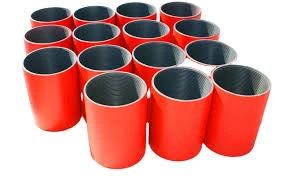- Afrikaans
- Albanian
- Amharic
- Arabic
- Armenian
- Azerbaijani
- Basque
- Belarusian
- Bengali
- Bosnian
- Bulgarian
- Catalan
- Cebuano
- Corsican
- Croatian
- Czech
- Danish
- Dutch
- English
- Esperanto
- Estonian
- Finnish
- French
- Frisian
- Galician
- Georgian
- German
- Greek
- Gujarati
- Haitian Creole
- hausa
- hawaiian
- Hebrew
- Hindi
- Miao
- Hungarian
- Icelandic
- igbo
- Indonesian
- irish
- Italian
- Japanese
- Javanese
- Kannada
- kazakh
- Khmer
- Rwandese
- Korean
- Kurdish
- Kyrgyz
- Lao
- Latin
- Latvian
- Lithuanian
- Luxembourgish
- Macedonian
- Malgashi
- Malay
- Malayalam
- Maltese
- Maori
- Marathi
- Mongolian
- Myanmar
- Nepali
- Norwegian
- Norwegian
- Occitan
- Pashto
- Persian
- Polish
- Portuguese
- Punjabi
- Romanian
- Russian
- Samoan
- Scottish Gaelic
- Serbian
- Sesotho
- Shona
- Sindhi
- Sinhala
- Slovak
- Slovenian
- Somali
- Spanish
- Sundanese
- Swahili
- Swedish
- Tagalog
- Tajik
- Tamil
- Tatar
- Telugu
- Thai
- Turkish
- Turkmen
- Ukrainian
- Urdu
- Uighur
- Uzbek
- Vietnamese
- Welsh
- Bantu
- Yiddish
- Yoruba
- Zulu
j55 coupling
Understanding J55 Couplings A Comprehensive Guide
In the world of oil and gas exploration, the integrity and reliability of equipment are of paramount importance. Among the myriad of components that ensure safety and efficiency in drilling operations, the J55 coupling stands out as a crucial element. This article delves into the intricacies of J55 couplings, exploring their specifications, applications, benefits, and maintenance practices.
What is J55 Coupling?
The term “J55” refers to a specific grade of steel used in the manufacture of tubular products, primarily in the oil and gas industry. J55 couplings are designed to connect sections of casing or tubing together, facilitating the transport of natural resources from underground to the surface. These couplings provide a reliable connection that can withstand high pressures and harsh environmental conditions, making them essential in exploration and production operations.
Specifications of J55 Couplings
J55 couplings are manufactured to meet the standards outlined by the American Petroleum Institute (API), specifically API 5CT. This grade of steel has a yield strength of approximately 55,000 psi, which is a critical factor when selecting materials for high-pressure environments. Apart from its yield strength, J55 steel is characterized by its good corrosion resistance and weldability, ensuring long-term durability.
J55 couplings typically come in various sizes and lengths, allowing for customization based on specific project requirements. They are often coated with protective materials to enhance their resistance to corrosion and physical abrasion, which extends their lifespan in harsh drilling environments.
Applications of J55 Couplings
The primary application of J55 couplings is in the oil and gas industry, particularly in the installation of casing and tubing systems. These couplings are indispensable when drilling deep wells, where maintaining structural integrity is crucial to prevent collapse and ensure safe extraction of hydrocarbons. Additionally, J55 couplings find applications in water well drilling and geothermal energy exploration, among other industries that require dependable connections for high-pressure systems.
j55 coupling

The versatility of J55 couplings makes them suitable for various drilling techniques, including vertical and horizontal drilling. Their ability to handle stress and pressure effectively means they can be used in both conventional and unconventional drilling settings.
Advantages of J55 Couplings
One of the key benefits of using J55 couplings is their reliability. These couplings have proven their performance in challenging environments, helping to minimize the risk of equipment failure and downtime. The strength of J55 steel contributes to reducing the frequency of maintenance and replacement, which can be expensive and time-consuming.
Furthermore, the cost-effectiveness of J55 couplings cannot be overlooked. While they are designed to endure extreme conditions, their initial investment is reasonable compared to other high-grade couplings, making them an appealing choice for many operators in budget-sensitive projects.
Maintenance of J55 Couplings
While J55 couplings are designed for durability, regular maintenance is essential to ensure their continued performance. Operators should perform inspections to check for signs of wear, corrosion, or damage. Regular cleaning and lubrication can help prevent issues related to buildup and sticking, ensuring smooth operation during assembly and disassembly.
It is also critical to follow the manufacturer's guidelines regarding the installation and usage of J55 couplings. Misalignment during installation can lead to stress concentrations, potentially compromising the integrity of the coupling. Therefore, proper training for personnel involved in the installation of these couplings is vital.
Conclusion
In conclusion, J55 couplings play a pivotal role in the safe and efficient operation of drilling activities in the oil and gas industry. Their robust specifications, wide-ranging applications, and notable advantages make them a preferred choice among operators. By understanding their features and adhering to best practices for maintenance, companies can maximize the benefits of J55 couplings, ensuring successful drilling operations and contributing to the overall efficiency of hydrocarbon extraction processes. As the demand for energy continues to rise, the significance of reliable components like J55 couplings will only grow in the quest for sustainable energy solutions.
-
Well Casing Extension Couplings – Applications and InstallationNewsJun.06,2025
-
Types of Crossover Subs in Drilling & CompletionNewsJun.06,2025
-
Key Features of High-Quality Tubing Pup JointsNewsJun.06,2025
-
Installation and Maintenance Tips for Steel Couplings for PipeNewsJun.06,2025
-
How to Select the Right Pup Joint for Oil & Gas OperationsNewsJun.06,2025
-
Applications of Stainless Steel Pipe CouplingsNewsJun.06,2025







